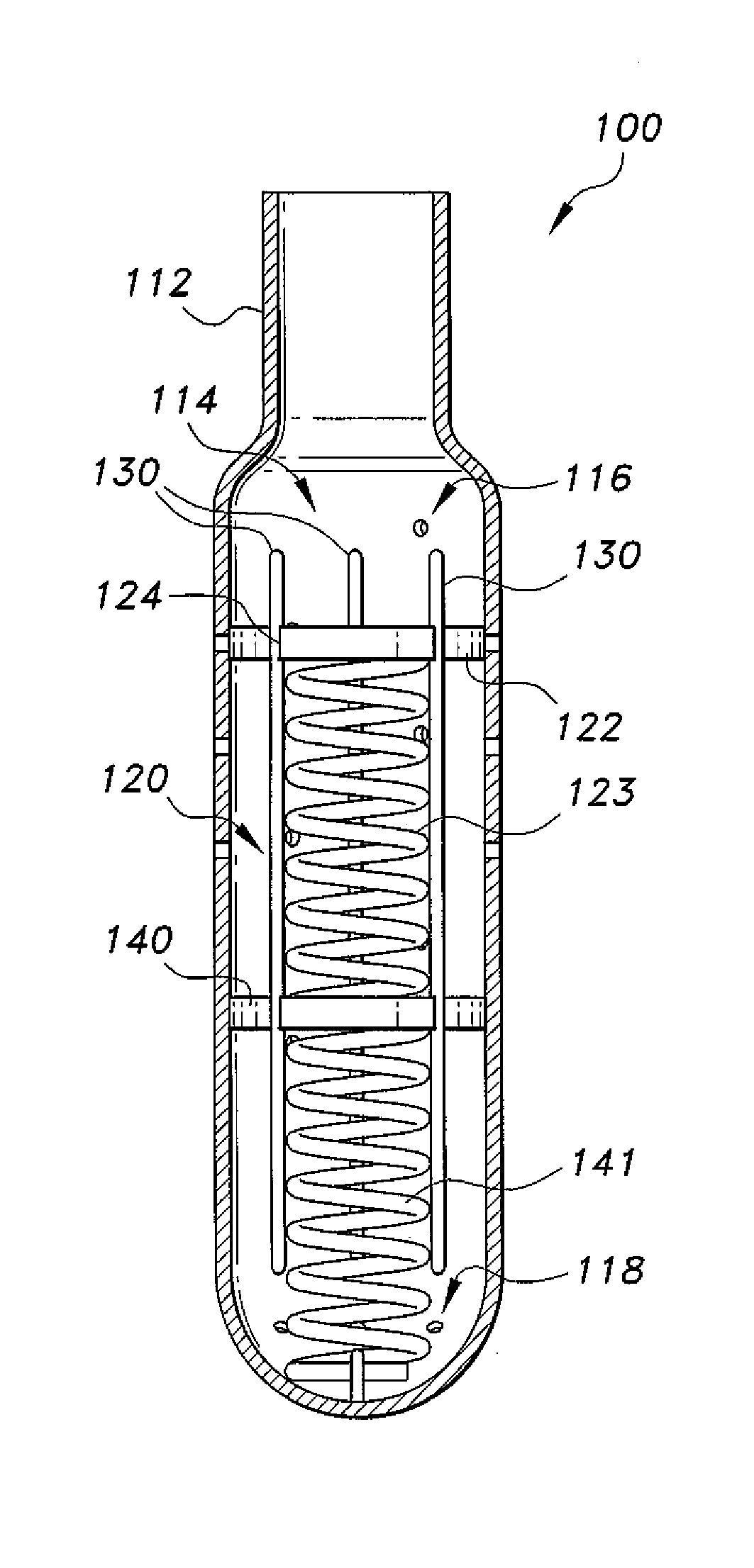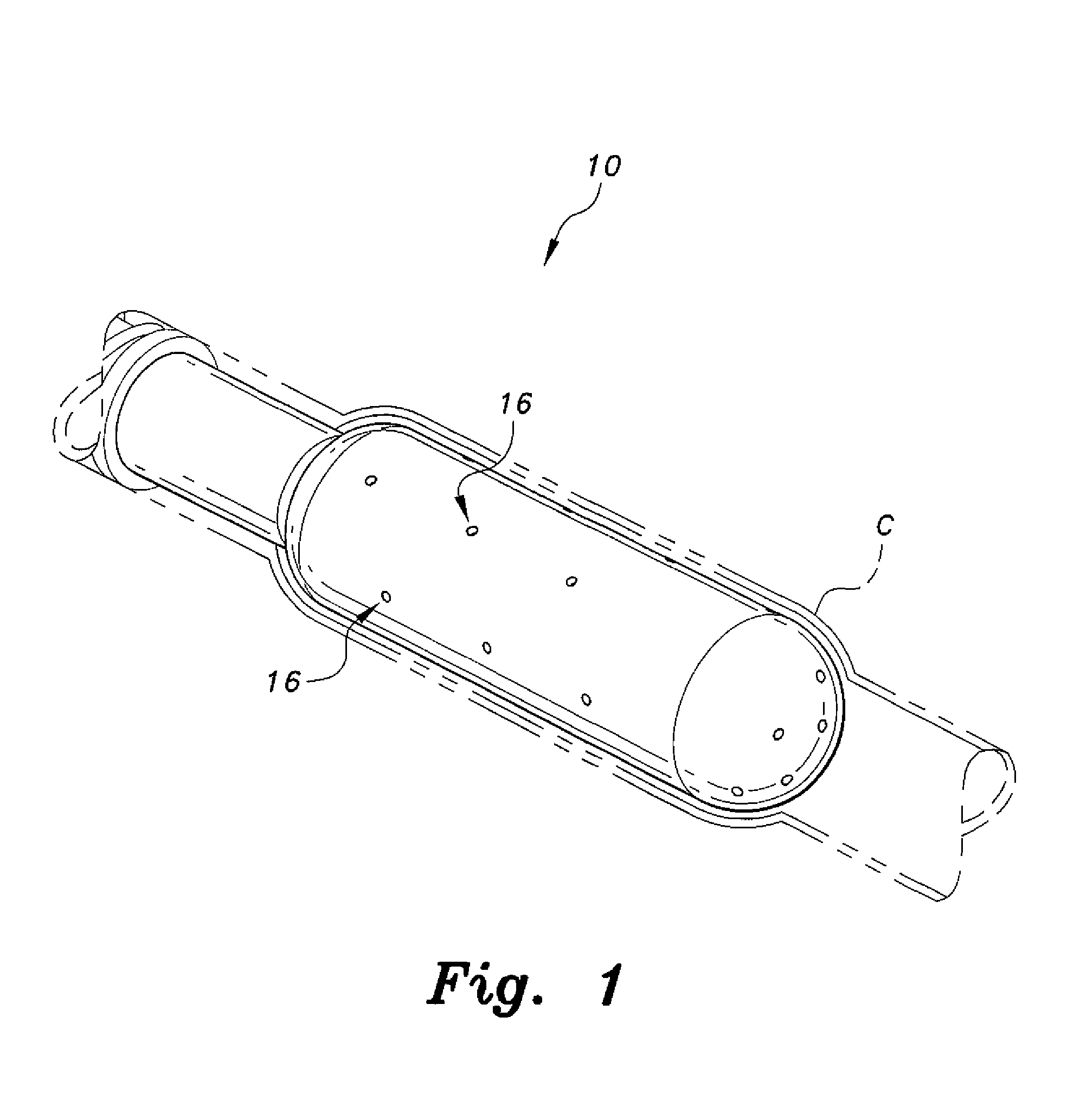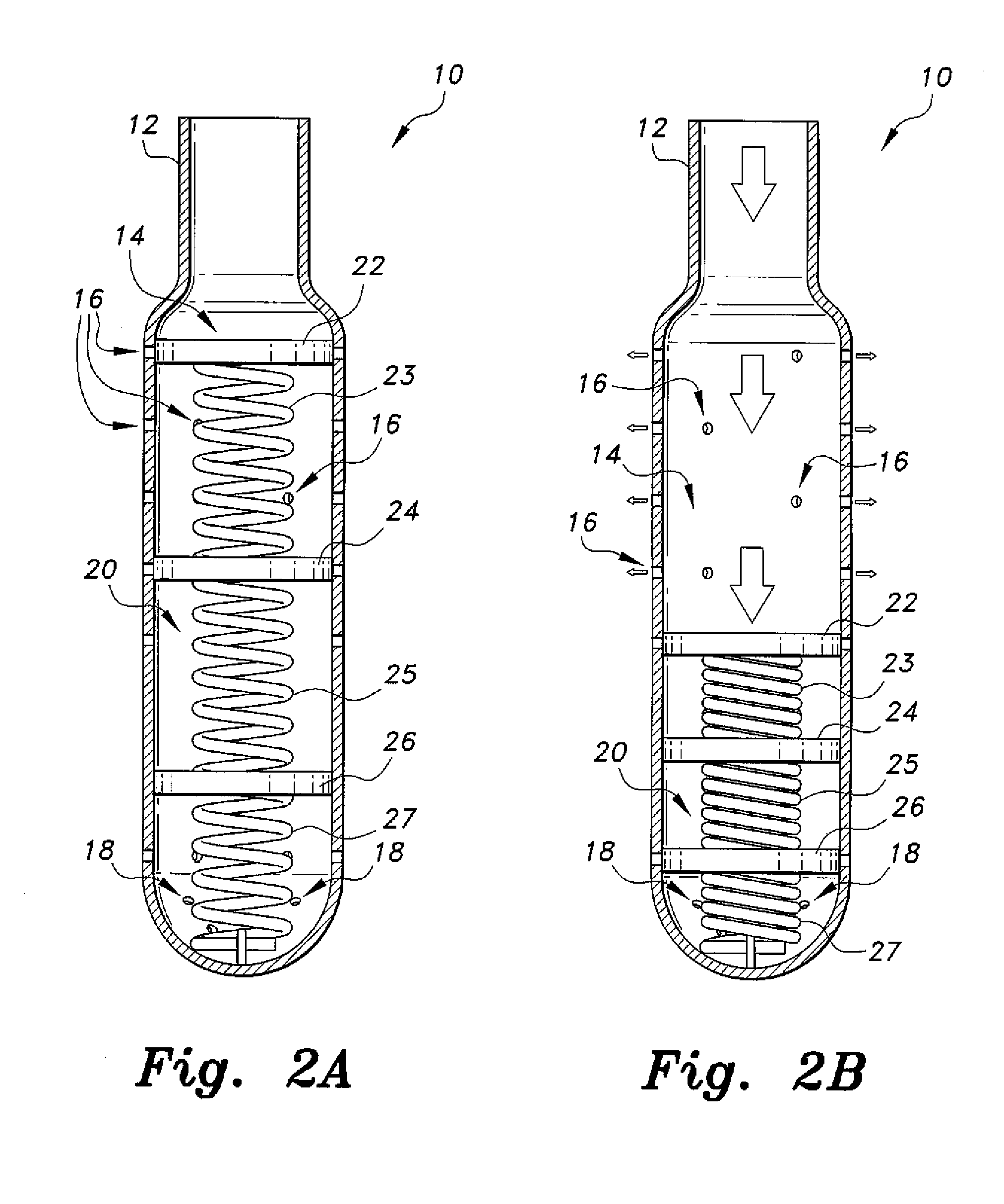CSF shunt valve
a shunt valve and cerebrospinal fluid technology, applied in the field of medical devices, can solve problems such as the performance of shunts, and achieve the effect of facilitating self-adjustment of drainage flow
- Summary
- Abstract
- Description
- Claims
- Application Information
AI Technical Summary
Benefits of technology
Problems solved by technology
Method used
Image
Examples
Embodiment Construction
[0022]The CSF shunt valve, a first embodiment of which is generally referred to by the reference number 10, provides self-regulating flow of CSF that varies depending upon the pressure of incoming fluid flow. As best seen in FIGS. 1, 2A and 2B, the CSF shunt valve 10 is configured to be detachably mounted to a ventricular catheter C. The CSF shunt valve 10 includes an elongate, hollow valve housing 12 defining an inner collecting chamber 14. A valve unit 20 is disposed inside the collecting chamber 14. The valve unit 20 regulates flow of CSF, while the collecting chamber 14 permits accumulation of the CSF for temporary storage and drainage through the valve unit 20.
[0023]As best seen in FIG. 3A, the valve housing 12 is constructed as an elongate, substantially cylindrical tube having an open end for selective connection to the catheter C, the opposite end being substantially closed. A plurality of exit ports or holes 16 are formed radially in the cylindrical sidewall of the housing ...
PUM
 Login to View More
Login to View More Abstract
Description
Claims
Application Information
 Login to View More
Login to View More - R&D
- Intellectual Property
- Life Sciences
- Materials
- Tech Scout
- Unparalleled Data Quality
- Higher Quality Content
- 60% Fewer Hallucinations
Browse by: Latest US Patents, China's latest patents, Technical Efficacy Thesaurus, Application Domain, Technology Topic, Popular Technical Reports.
© 2025 PatSnap. All rights reserved.Legal|Privacy policy|Modern Slavery Act Transparency Statement|Sitemap|About US| Contact US: help@patsnap.com



